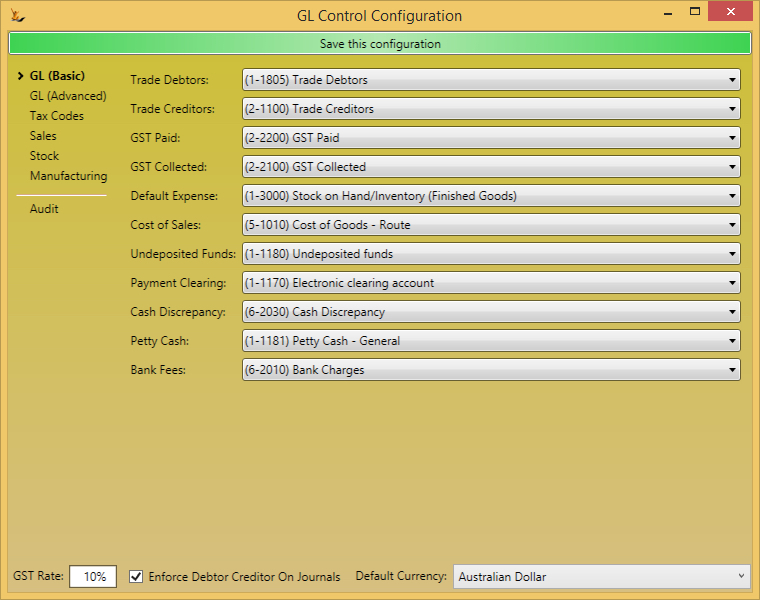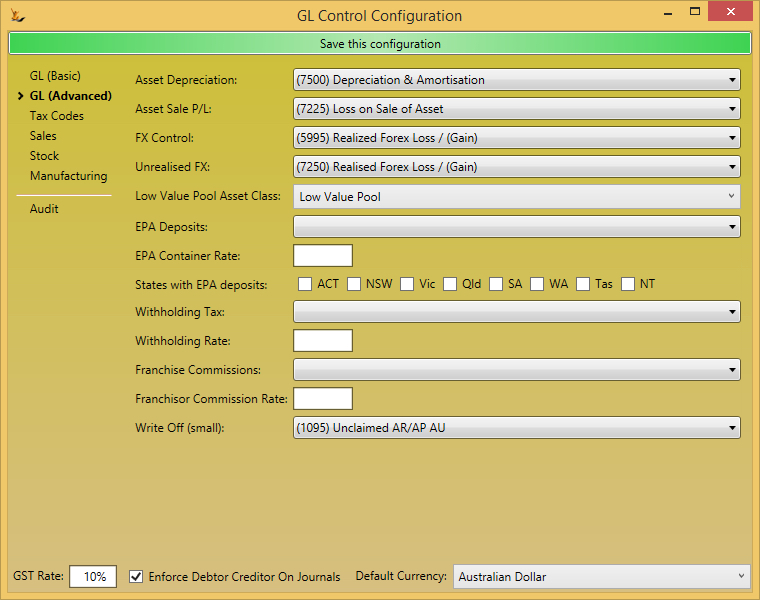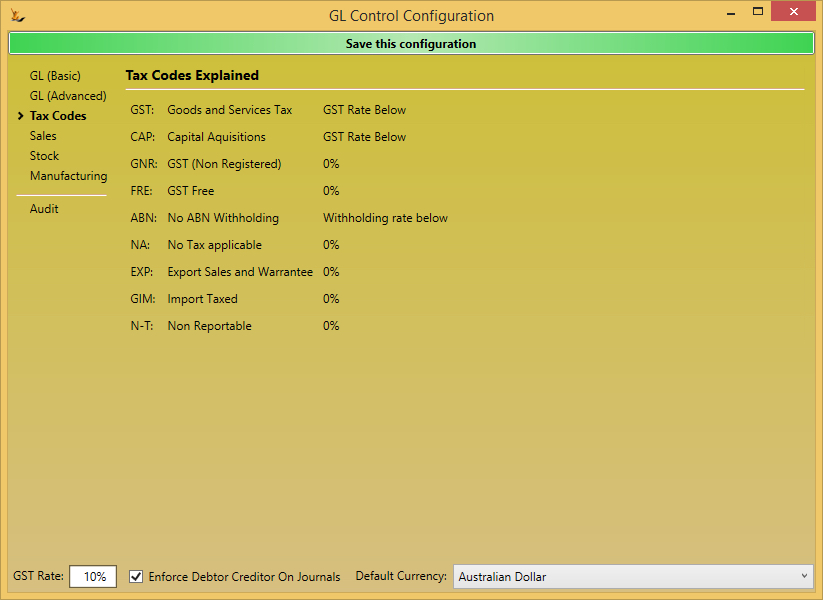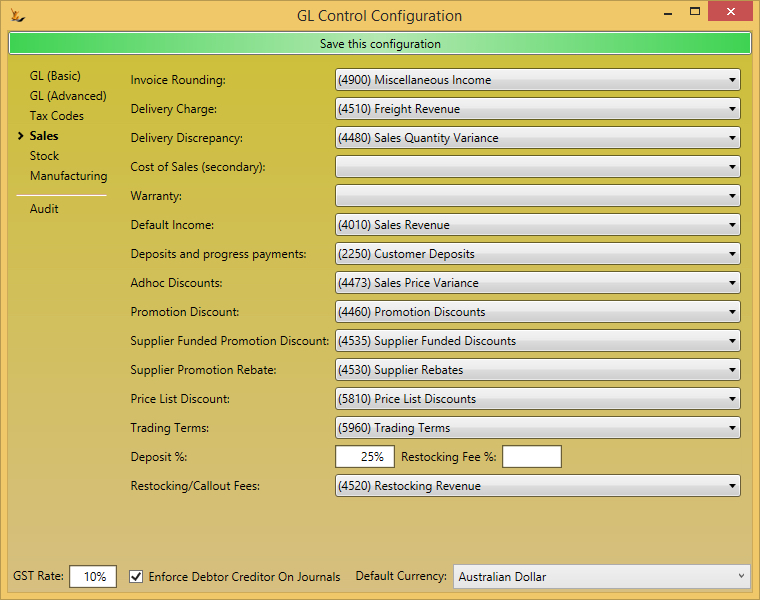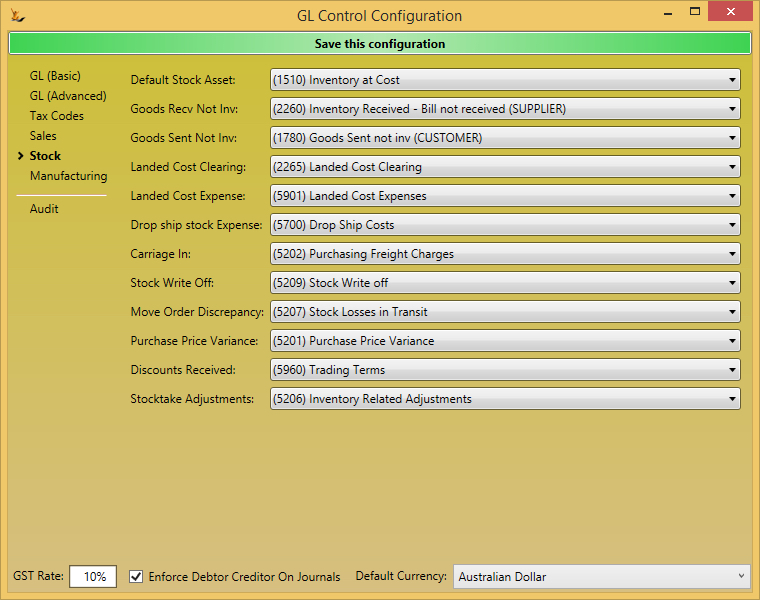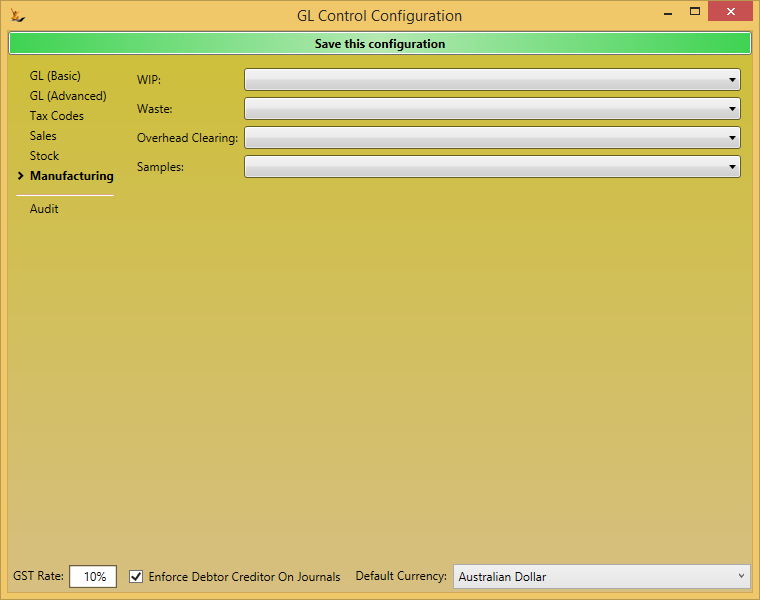Use Sidebar LHS to navigate
For global help click here
GL Control Accounts
Overview
Control accounts are accounts that only the system can post to - this ensures that the balance of these accounts have not been adjusted by manually posting journals. Note: a secure feature exists for posting to GL Control Accounts.
These are the default accounts to use for transactions in the system.
Set all the defaults to be used in the system for GL codes for particular transactions
- Trade Debtors, Creditors - for invoices
- GST Paid and collected - for GST
- Dftl Income and Expense is Default Income and Expense Accounts
- Undeposited Funds - for funds received but not yet deposited (eg cash in a till)
- Cash Discrepancy - for when counting cash floats
- Invoice Rounding on sales invoices when cash sales are made
- Delivery Charges on sales orders
- Goods Received not Inv is goods received not invoiced
- Default Stock Asset - Inventory stock on hand
- Cost of Sales - COGS
- Cost of Sales Assembly - is cost of Sales Assemblies that are assembled only when sold and not stocked.
- Warranty costs for parts and labour
- Stock write off - example returns to scrap
- FC Position Foreign Currency
- GST Rate
- Asset Depreciation - for depreciation expense
- FX Control - to track foreign exchange adjustments
- Unrealised FX - gains and losses
- EPA is deposits on drink bottles
- Withholding tax is for creditors that do not provide an ABN - The system will warn users on creation of Creditor Invoice. You may add a line to the invoice or instead create a creditors credit note for the withholding amount. The withheld amounts will show on the GST Explorer
- Deposits and Progress Payments - where an invoice may have been raised but with no GST as the funds have not been earnt yet
- Deposit % - where a standard deposit is required
- Restocking Fee - where a standard cancellation charge applies
COD customer orders can be defaulted to 100% payment required either (1) before authorisation or (2) before picking or (3) not defaulted. The % is held per debtor and so can be adjusted for each debtor.
, multiple selections available, Use left or right arrow keys to navigate selected items
For information about SaaSplications go to http://saasplications.com.au
